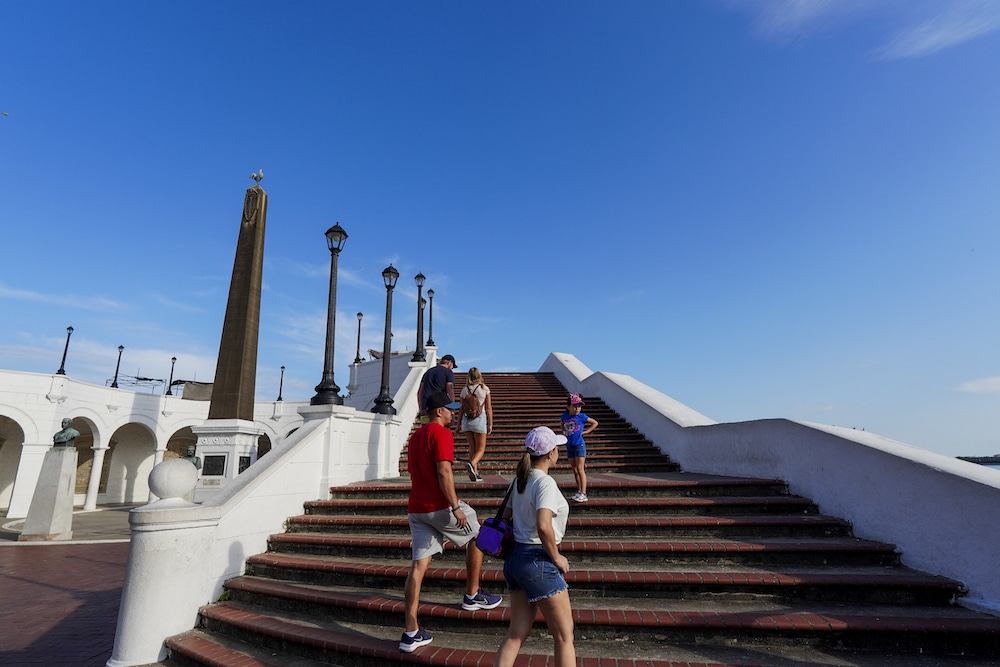The Plaza of France was the last of the squares in Casco Antiguo. Located at one end of the neighborhood, just below the Monumental Complex of Las Bovedas, which makes people think that it is only one place when there are really two. In those days, it became fashionable to create plazas dominated by monuments in the rapidly growing Panama City. The first recreational park in Panama City was Urraca Park, which was built in the new neighborhood of Bella Vista in 1918.

The space where the Plaza of France is located was a parade ground for military use. The floor was made of compacted earth and had no elements that could hinder the functions for which it was conceived. This military plaza originated in the 17th century and remained in use until 1920 when President Belisario Porras ratified Law 2 of January 8, 1920. This law ordered the military plaza to become a monumental complex that commemorates the glory of “those sappers of progress” linked to the construction of the French canal.
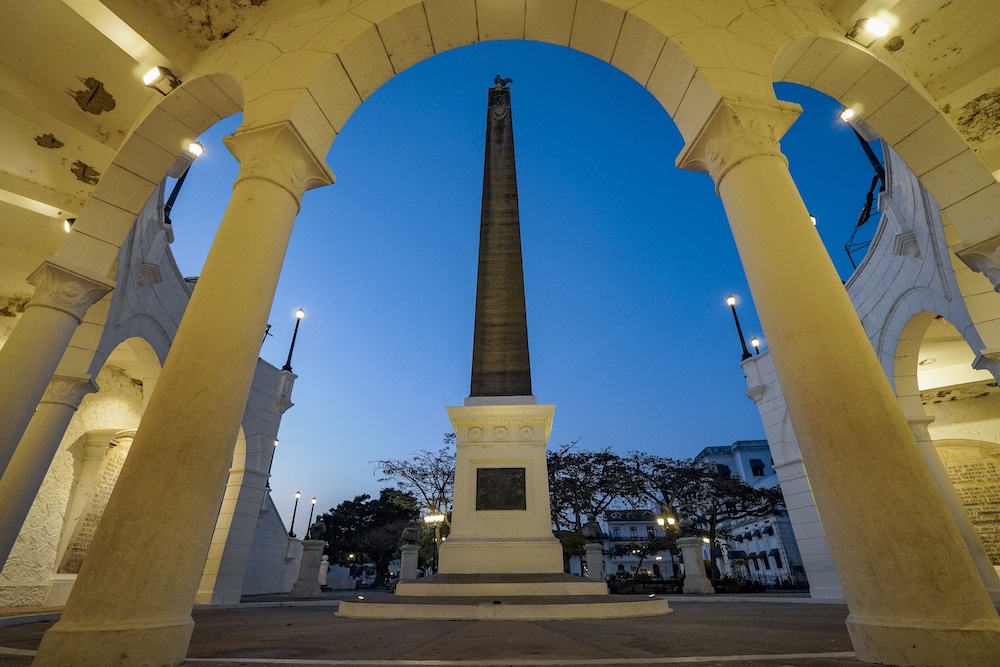
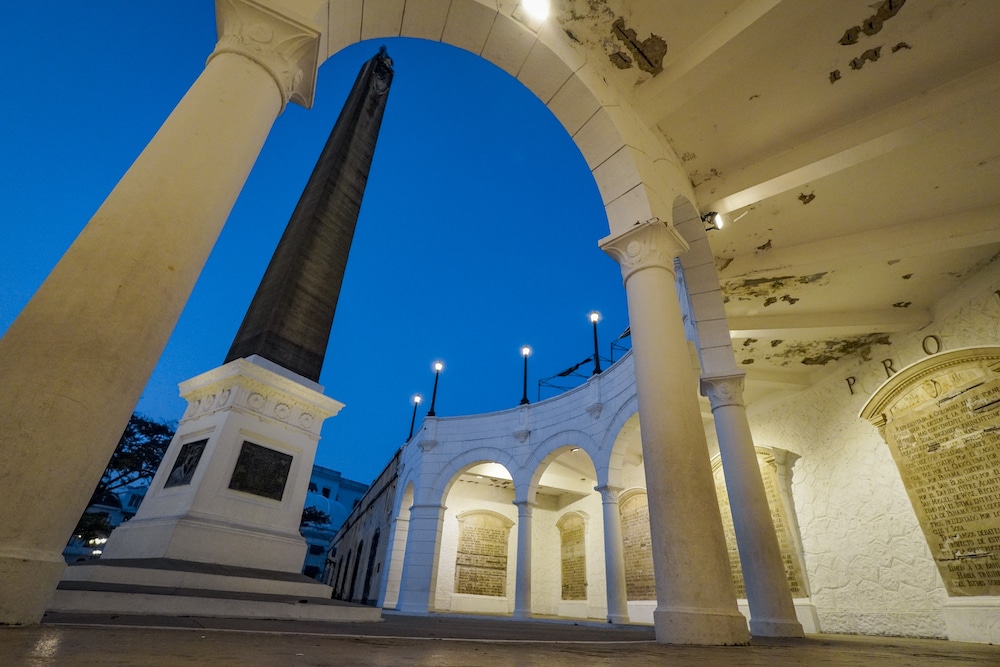
Tribute to France
This new square in the Old Town of Panama would be in honor of the French Republic. The French Embassy in Panama is located in front of the Plaza of France in a beautiful building that overlooks the Pacific Ocean. The architect Leonardo Villanueva Meyer was hired for its construction for an amount of 35,000 dollars. Other works of his include the renovation of the Palacio de Las Garzas, the National Archive of Panama, Plaza Bolivar including the Antiguo Hotel Colombia and the Saint Francis of Assisi Church and the La Pollera Building (which is my favorite).
Originally the Plaza of France was called Plaza de Lesseps. In it is the bust of Ferdinand de Lesseps who tried to build the Panama Canal after the success of the Suez Canal. There are also busts of Armand Reclus, Lucien Bonaparte Wyse, Leon Boyer and Pedro J. Sosa to the right and left of Lesseps, who occupies the main place. All these men were key to the French attempt to build the canal between 1880-1980.
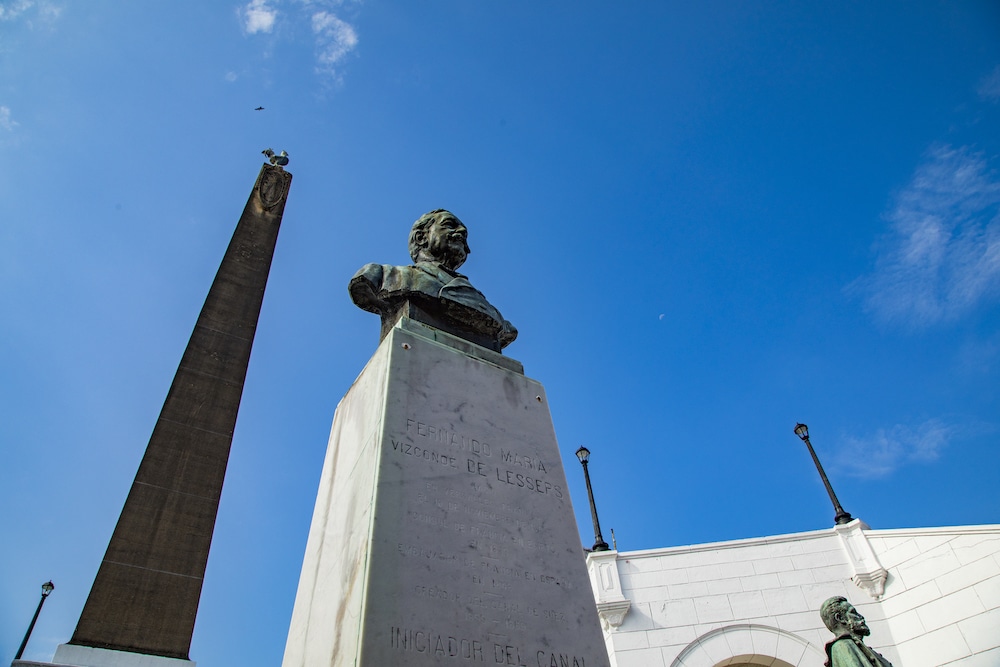
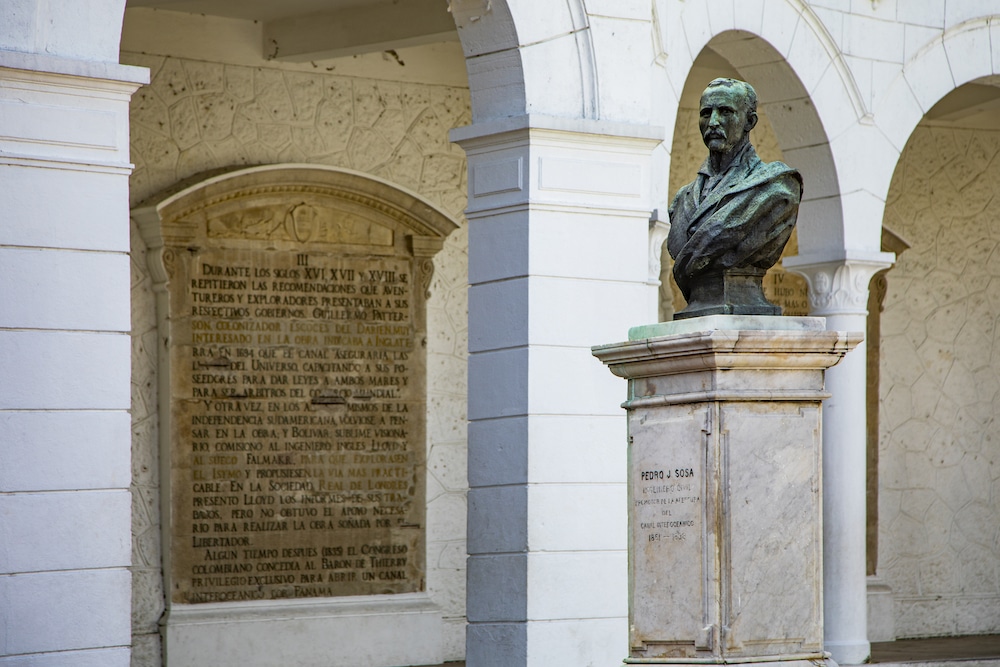

Some 22,000 workers who lost their lives in the French construction of the Panama Canal are commemorated here on stone tablets. Most of the workers died of malaria and yellow fever. There is another bust of Carlos J Finlay, who discovered how mosquitoes transmit the disease, which helped eradicate it.
Architecture of the Plaza of France
In the middle of the square there is an 18 meter high obelisk made of granite with a bronze Gallic rooster on its top which is the symbol of France. The reliefs on the base of the obelisk were made in Paris by the sculptor Niclausse. Beneath the obelisk are the signatures of 5,000 Panamanian children from public schools who “contributed with their little mite.” As a fun fact, the metal plate at the base of the obelisk can be pushed leading to what may have been a tunnel at one time.

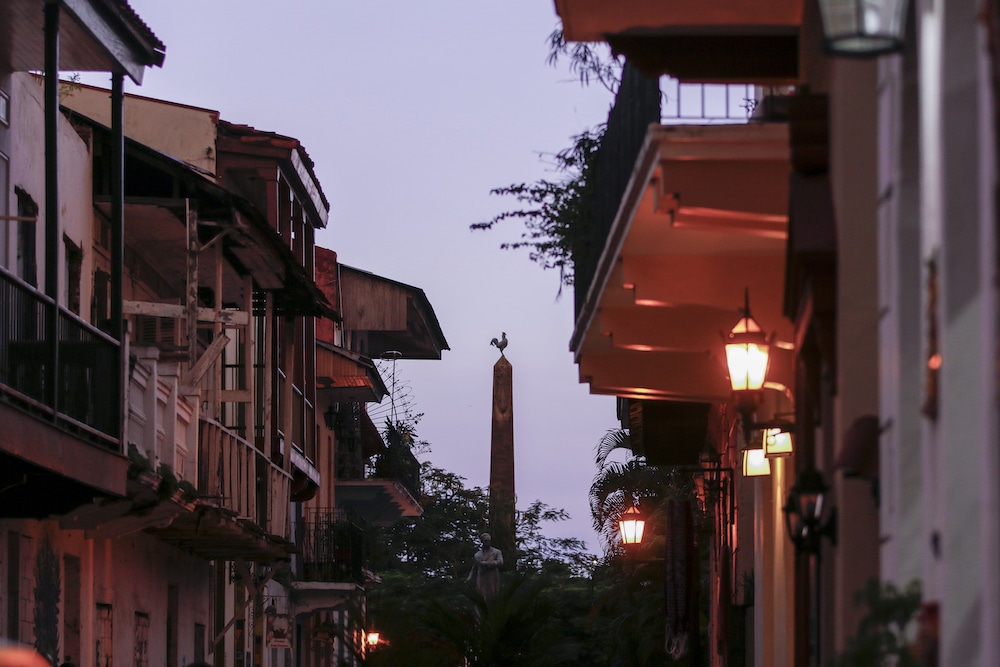
The murals in the Plaza of France were laminated in wrought bronze with figures showing images of workers during the construction of the Panama Canal. Huge mural plates made of marble from Carrara, Italy, tell the story that was written by Doctor Octavio Mendez Pereira (first rector of the University of Panama in 1936. The lanterns were made with underground cables for electrical lighting using a Spanish neoclassical architectural style.
All the moldings that are seen in the Plaza of France were brought from abroad in ships, since Panama did not have factories or supplies to make such pieces.
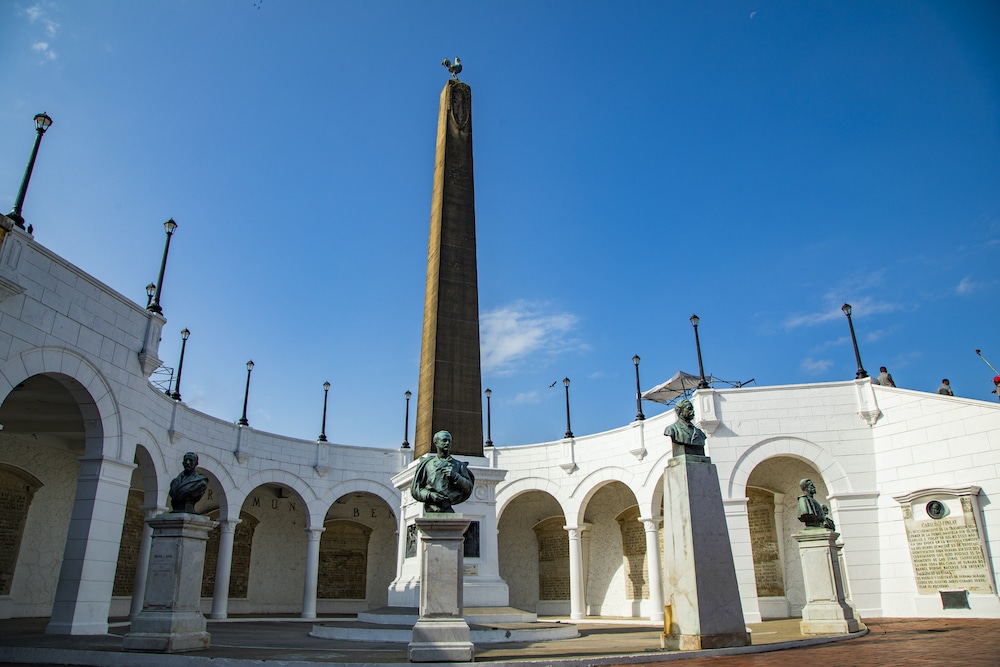

Inauguration to the Present
This monumental complex in Casco Viejo was inaugurated on December 4, 1923 during the mandate of President Belisario Porras. At the end of the 1920s, the Chiriqui Barracks was demolished to build the building that for many years was the National Institute of Culture, which, upon becoming the Ministry of Culture of Panama, decided to move to Via Argentina. The old building will be the future National Museum of History, with no start date for construction. Next to this building is the Anita Villalaz Theater that continues to operate.
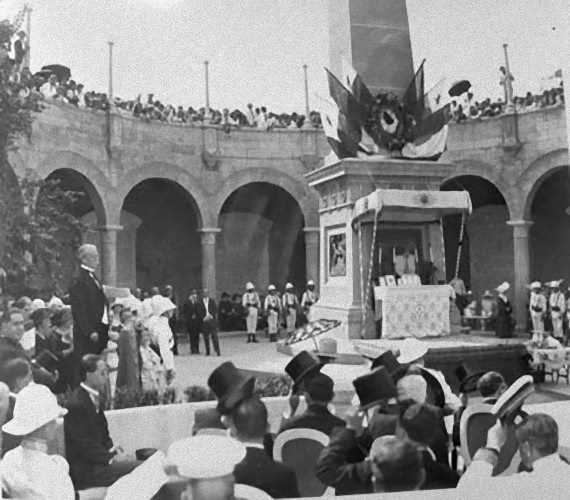
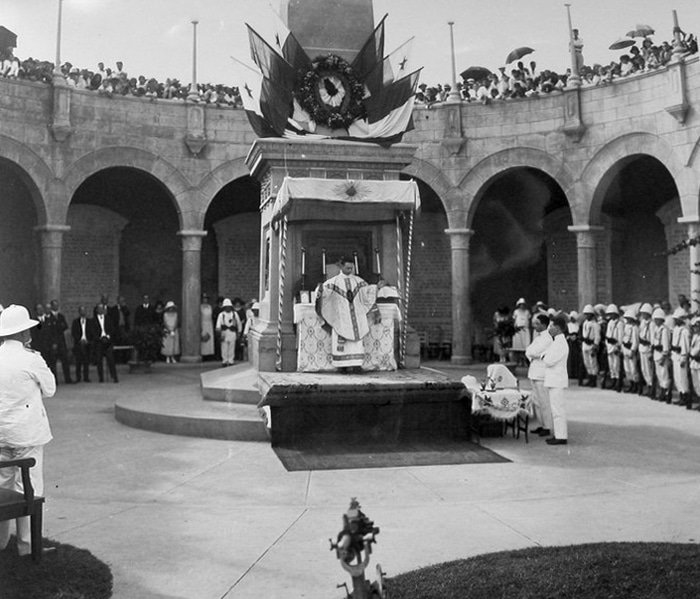
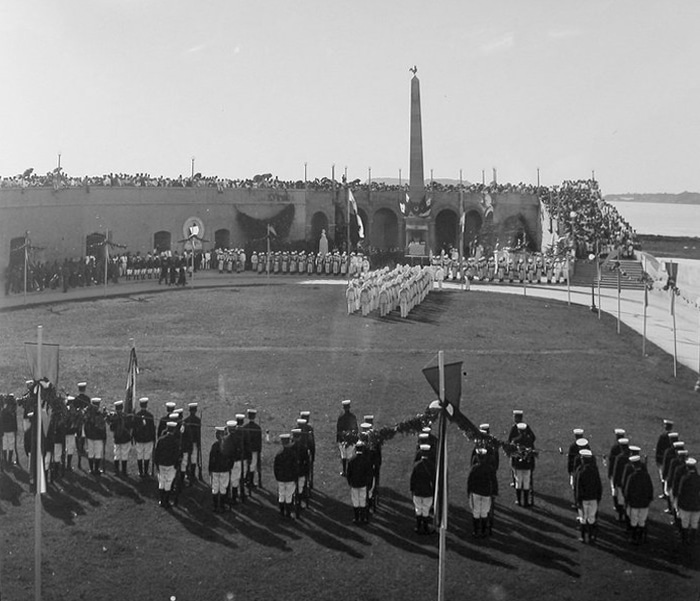
Some people have the hypothesis that this monumental set of tributes to France was made by Belisario Porras as an instrument of nationalism resulting from the growing Panamanian anti-Yankee sentiment. Law 48 of November 24, 1928 orders to change the name of the Plaza of France to Plaza de Roosevelt in honor of US President Theodore Roosevelt. This same president is responsible for people knowing an Ecuadorian hat with the name of Panama Hat. Later the square returned to its original name.
In 1944, the corridor that is located above the Monumental Complex of Las Bovedas was renamed Paseo Esteban Huertas, in honor of the Colombian general who helped Panama in its separation from Colombia in 1903. The area of the Plaza de Francia borders the Pacific Ocean offering views of the islands in the Amador Causeway and the Bridge of the Americas. Sit down to have a coffee and eat a sweet at Dodó Bon Pan Café while you observe the beautiful Plaza of France with its imposing obelisk.
